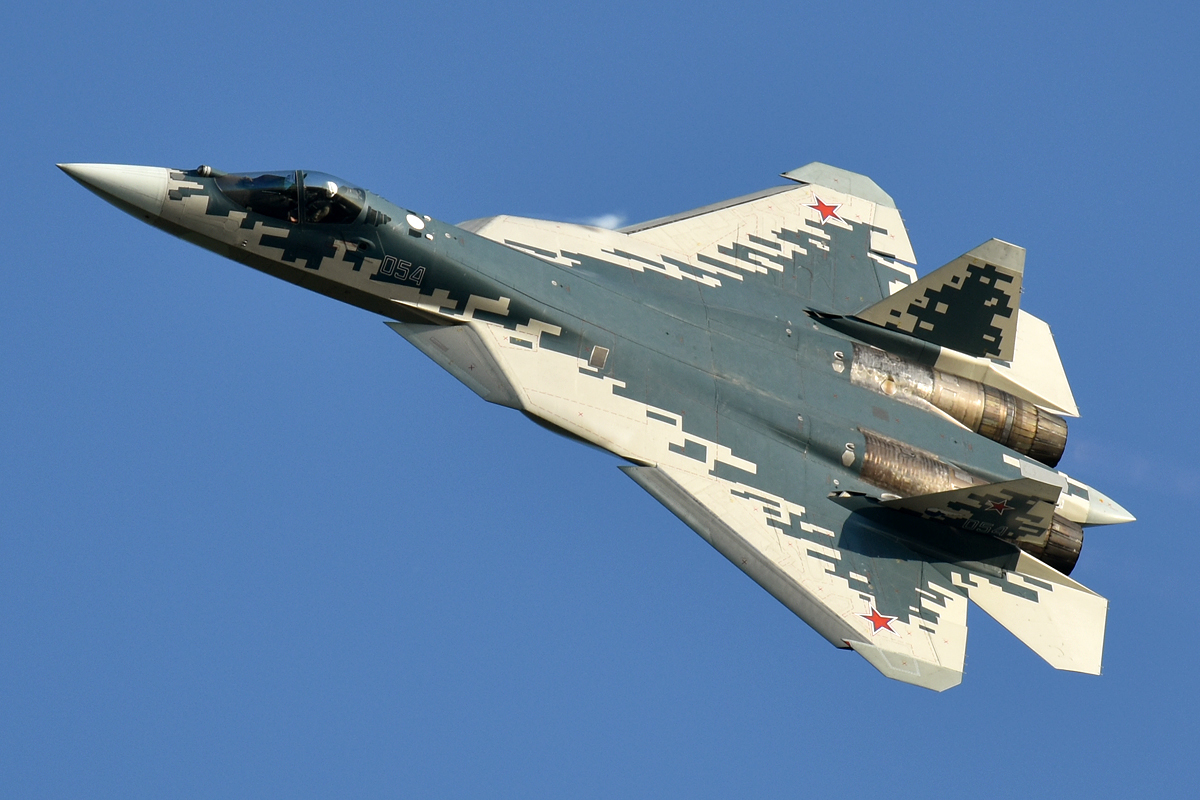Table of Contents
As India intensifies its quest to modernize the Indian Air Force (IAF), the debate over choosing a fifth-generation stealth fighter has gained momentum. Two powerful contenders dominate this conversation: the Sukhoi Su-57 from Russia and the Lockheed Martin F-35 Lightning II from the United States. While both aircraft represent cutting-edge technology, India’s choice will be influenced by strategic alliances, technical requirements, and long-term defence self-reliance goals.
This article breaks down everything you need to know about the Sukhoi Su-57, its relevance to India, and how it stacks up against the F-35.
What is the Sukhoi Su-57?
The Sukhoi Su-57 is Russia’s first operational fifth-generation stealth fighter. Developed by Sukhoi, a part of United Aircraft Corporation (UAC), it is designed for air superiority and ground attack missions with stealth, agility, and advanced avionics.
Key Features:
-
Stealth Technology: Radar cross-section reduction through airframe shaping and radar-absorbing materials
-
Supermaneuverability: 3D thrust vectoring for unmatched agility
-
Speed: Mach 2+
-
Combat Radius: ~1,500 km
-
Multirole Capability: Air-to-air, air-to-ground, and electronic warfare
-
Internal Weapon Bays: Supports stealth during combat
-
Future Engine: Izdeliye 30 (under development), to enhance thrust and supercruise ability
Su-57 India: Past, Present & Possibilities
India was once part of the FGFA (Fifth Generation Fighter Aircraft) program—a joint Indo-Russian venture to co-develop a two-seat variant of the Su-57. However, in 2018, India withdrew from the FGFA project due to concerns over:
-
Lack of true fifth-gen features
-
Underperformance in stealth and avionics
-
Limited technology transfer
-
High project costs
But is the Door Closed?
Not quite. India has kept the option open to procure the Su-57 once it matures. Since then:
-
The Su-57 has been deployed in Syria and Ukraine
-
Russia claims to have fixed major stealth and engine issues
-
The Izdeliye 30 engine is undergoing flight testing and may be operational in Su-57s delivered post-2025
As of 2025, unconfirmed reports suggest India may reconsider acquiring Su-57 variants, especially if the aircraft fulfills the IAF’s demand for a twin-seat, twin-engine stealth fighter—something not offered by the F-35.
F-35 vs Su-57: Feature-by-Feature Comparison
| Feature | Sukhoi Su-57 | F-35 Lightning II |
|---|---|---|
| Country | Russia | United States |
| Generation | 5th | 5th |
| Engines | 2 (Saturn AL-41 / Izdeliye 30) | 1 (Pratt & Whitney F135) |
| Stealth | Moderate | Very High (optimized RCS) |
| Supercruise | Planned (with Izdeliye 30) | Limited (F-35A only) |
| Maneuverability | Superior (3D Thrust Vectoring) | Average |
| Combat Radius | ~1,500 km | ~1,100 km |
| Multirole | Yes | Yes |
| Network Warfare | Developing | Advanced (sensor fusion, data links) |
| Price per Unit | $45–$55 million (estimated) | $80–$100 million |
| Export Restrictions | Low | High (US-controlled) |
| Technology Transfer | Possible (with Russia) | Unlikely |
Why India May Prefer Su-57 Over F-35
Strategic Autonomy
The U.S. imposes strict end-user monitoring, limiting operational independence. Russia offers greater flexibility and may allow customization or co-production, especially if revived under the FGFA framework.
Budget Constraints
The Su-57 is more cost-effective per unit than the F-35 and may suit India’s stretched defence budget.
Engine Power and Agility
Su-57’s 3D thrust vectoring and dual-engine configuration offer better survivability in contested airspace like the Himalayas or Indo-Pacific regions.
Two-Seat Variant Potential
India needs a dual-seat version for mission flexibility and operational training—something not available in the F-35 line.
Challenges with Su-57 for India
-
Unproven Reliability: Still undergoing trials; lacks combat-proven maturity compared to Western fighters
-
Production Delays: Russian defence manufacturing slowed due to sanctions and war-time economy
-
Lack of Global Ecosystem: The F-35 benefits from a vast network of partner nations; Su-57 doesn’t
Su-57 vs F-35: Which Fighter is Better for India?
There’s no clear-cut winner. The F-35 is the most advanced in terms of stealth, network warfare, and battle-tested systems, while the Su-57 offers agility, customization potential, and cost advantage.
India’s decision will depend on:
-
Geopolitical alignments
-
Technology transfer and Make in India provisions
-
Urgency of IAF’s requirements
-
Long-term partnership value
Conclusion
While the F-35 is tempting, India may reject both F-35 and Su-57 for now and instead focus on:
-
Scaling up Tejas Mk-1A production
-
Accelerating AMCA development
-
Reconsidering a custom FGFA-style Su-57 variant with twin seats and indigenous systems
India’s focus remains on strategic independence and indigenous capability building, but short-term acquisitions cannot be ruled out—especially if tensions escalate along the borders.


 UN ESCAP Asia-Pacific Disaster Report 20...
UN ESCAP Asia-Pacific Disaster Report 20...
 Rare Hawfinch Sighting in Corbett Nation...
Rare Hawfinch Sighting in Corbett Nation...
 Bnei Menashe Community : The Lost Tribe ...
Bnei Menashe Community : The Lost Tribe ...

























